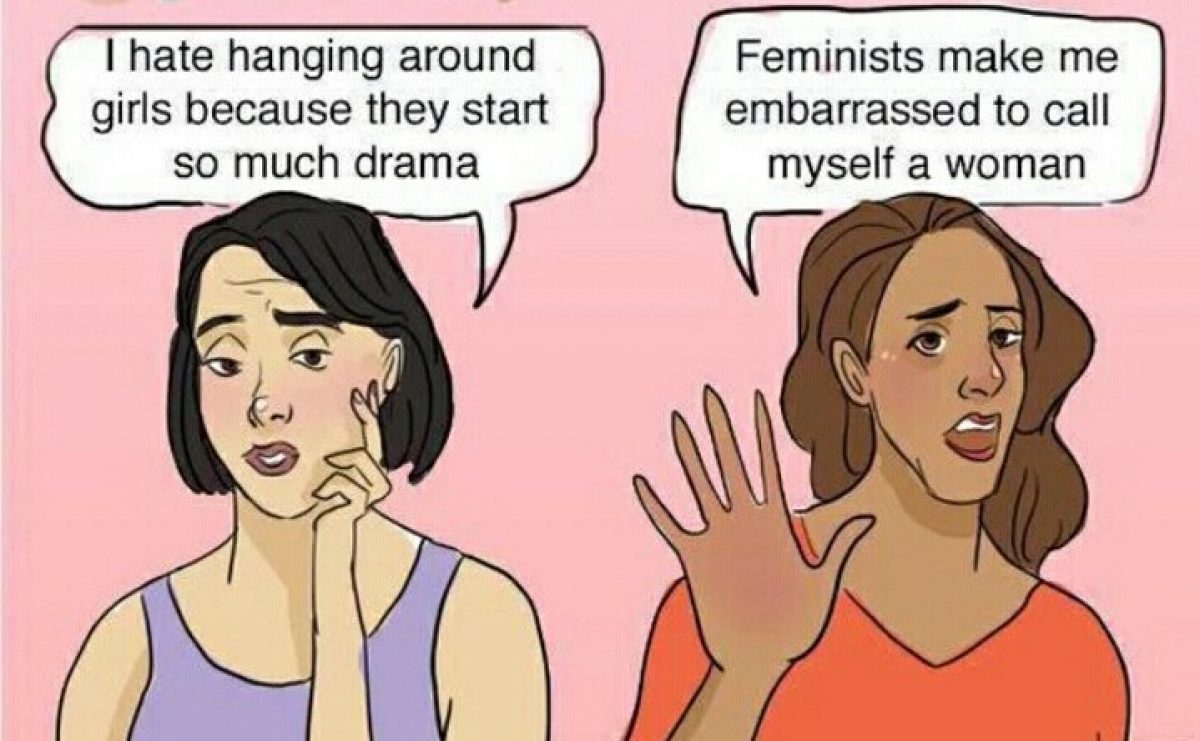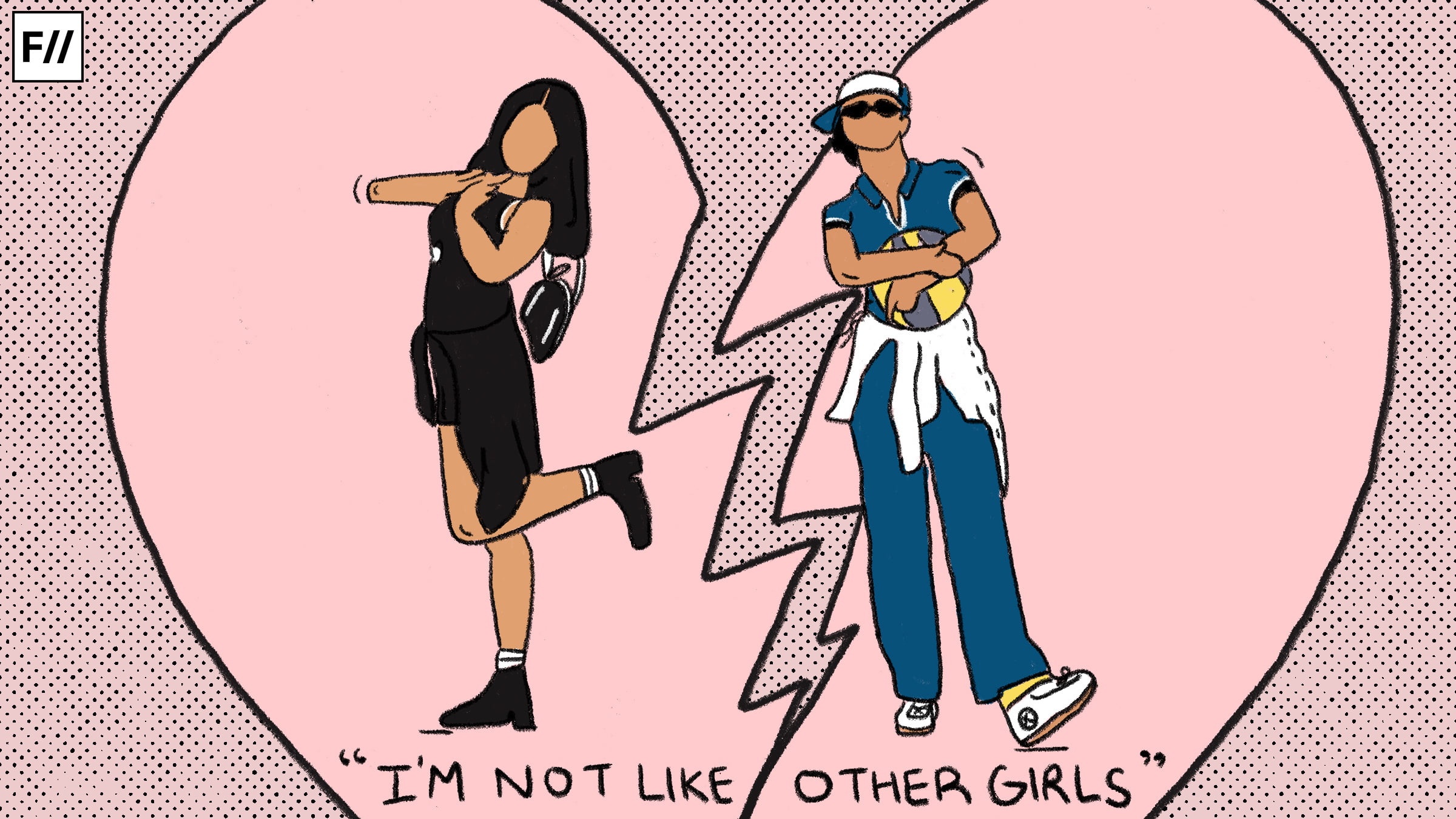Remember how Anjali from Kuch Kuch Hota Hai (1998) casually demeaned her female collegemates to gain the validation of her male best friend? “At least main un stupid ladkiyon ki tarah nahi hoon jinke peeche tum bhaagte rehte ho” (At least I am not like those stupid girls you keep pursuing) is a classic example of internalised sexism.
While overt forms of sexism are more identifiable, internalised sexism is harder to point out, as well as rectify. In simple terms, it is the sexist attitude taken on by women towards themselves and other women. It comes under the larger concept of internalised oppression which helps oppression linger in the absence of the oppressor because the oppressed have internalised the oppression.
My mother put it in simpler terms, “We have been breathing in sexism since our childhood, so much so that we have internalised it”. Internalised sexism or misogyny then, leads women to believe sexist myths and stereotypes to be actually true.
The messages women hear throughout their lives like “women can’t drive”, “girls are weak”, “women have no capacity for leadership”, and so on, keep echoing inside them, leaving them with self-doubt and an inferiority complex.

Internalised sexism leads to the “pick me behaviour” wherein women are pitted against each other to the extent that they trash other women in order to portray themselves as superior, or rather “different” from other women. “I don’t wear makeup, I’m not like other girls”, is a typical example of the pick-me behaviour. Internalised sexism a prominent form of psychological and social brainwashing of women. They are gaslighted into believing that they are less than who they really are in the process of internalising sexist conditioning and stereotypes.
The use of mass media to propagate sexism is not an untold story. The difference in the portrayal of male friendships and female friendships is particularly interesting. While the former is glorified, the latter is usually portrayed to be about gossiping and worse, “cat-fights”. The result is something you’ve heard one or another woman say at least once, “I can’t stand girlfriends, they’re so bitchy, I’d rather have male friends.”
Moral policing of girls and young women is also an example of internalised sexism. Independent and assertive women being labelled as “too loud” and “too bossy” by women who have conformed to patriarchal gender roles, reinforce sexist attitudes in the society. Instead of encouraging their daughters to be ambitious and independent, mothers are often seen asking them to “adjust” and be “homely” in order to sustain marriages
The women who have internalised sexism throughout their lives can be seen making desperate attempts to separate themselves from other women, in order to avoid the inferiority bestowed upon women. Aishwarya Rai Bachchan, for example, in an episode of Koffee with Karan, said, “I can’t have typically girly conversations like the rest of the actresses. The shoes and bags are part of what we do but that can’t be all I talk about. Yes, some girls in Bollywood can talk about other things but then there are those who just can’t.”
This is just one of the uncountable sexist and misogynistic statements given by women on the show, and the way the mean comments by one actress about another are circulated as “masala” is the way patriarchy is perpetuated through internalised sexism. We must note here that even successful women are conditioned into making such remarks on their peers and colleagues in order to put themselves on a pedestal.
Women fighting against each other for male validation, instead of forming meaningful friendships among themselves is a manifestation of internalised sexism.
Also read: How I Learnt To Unlearn My Internalised Misogyny
Internalised sexism is harder to recognise and dismantle because when the victims become the perpetrators of the same kind of oppression that they have endured, they become the agents of patriarchy hoping for some kind of reconciliation with their own trauma or validation from their male counterparts for repeating the same actions that traumatised them
Moral policing of girls and young women is also an example of internalised sexism. Independent and assertive women being labelled as “too loud” and “too bossy” by women who have conformed to patriarchal gender roles, reinforce sexist attitudes in the society. Instead of encouraging their daughters to be ambitious and independent, mothers are often seen asking them to “adjust” and be “homely” in order to sustain marriages.
This does not invalidate the fact that men and male centric socio-moral institutions are sexist and misogynistic. In a society that works in the favour of men, they are the primary agents of sexism. But one would expect women to develop an experiential solidarity and sisterhood in such an environment. Patriarchy wields itself here, and ensures that even women are conditioned into bringing other women down, and facilitating the lop-sided gender power structure of patriarchy to continue.
Once we pay attention, it isn’t difficult at all to spot internalised sexism in our everyday lives. It is as much about a woman body-shaming another woman as it is about a woman making self-deprecating jokes about herself. Constantly performing negative social comparisons with fellow women and considering other women as competitors for male approval are two of the common ways internalised sexism reaps the desired effects to sustain patriarchy.

Internalised sexism is harder to recognise and dismantle because when the victims become the perpetrators of the same kind of oppression that they have endured, they become the agents of patriarchy hoping for some kind of reconciliation with their own trauma or validation from their male counterparts for repeating the same actions that traumatised them.
It is only through conversations, unlearning and building strong female solidarities that we will be able to see through the tight rope of how we all harbour and perform sexism, despite also being at the receiving end of it.
Also read: 6 Things Internalised Misogyny Ruined For Women
About the author(s)
Apoorva is currently pursuing her Master’s in English from Jamia Millia Islamia, New Delhi. When she’s not re-reading the letters by Virginia Woolf, she likes to try her hand at scribbling poetry. Her areas of interest revolve around Feminist Theory and Absurdist Fiction. She can be found brewing tea at midnight, complaining about our Sisyphean existence




